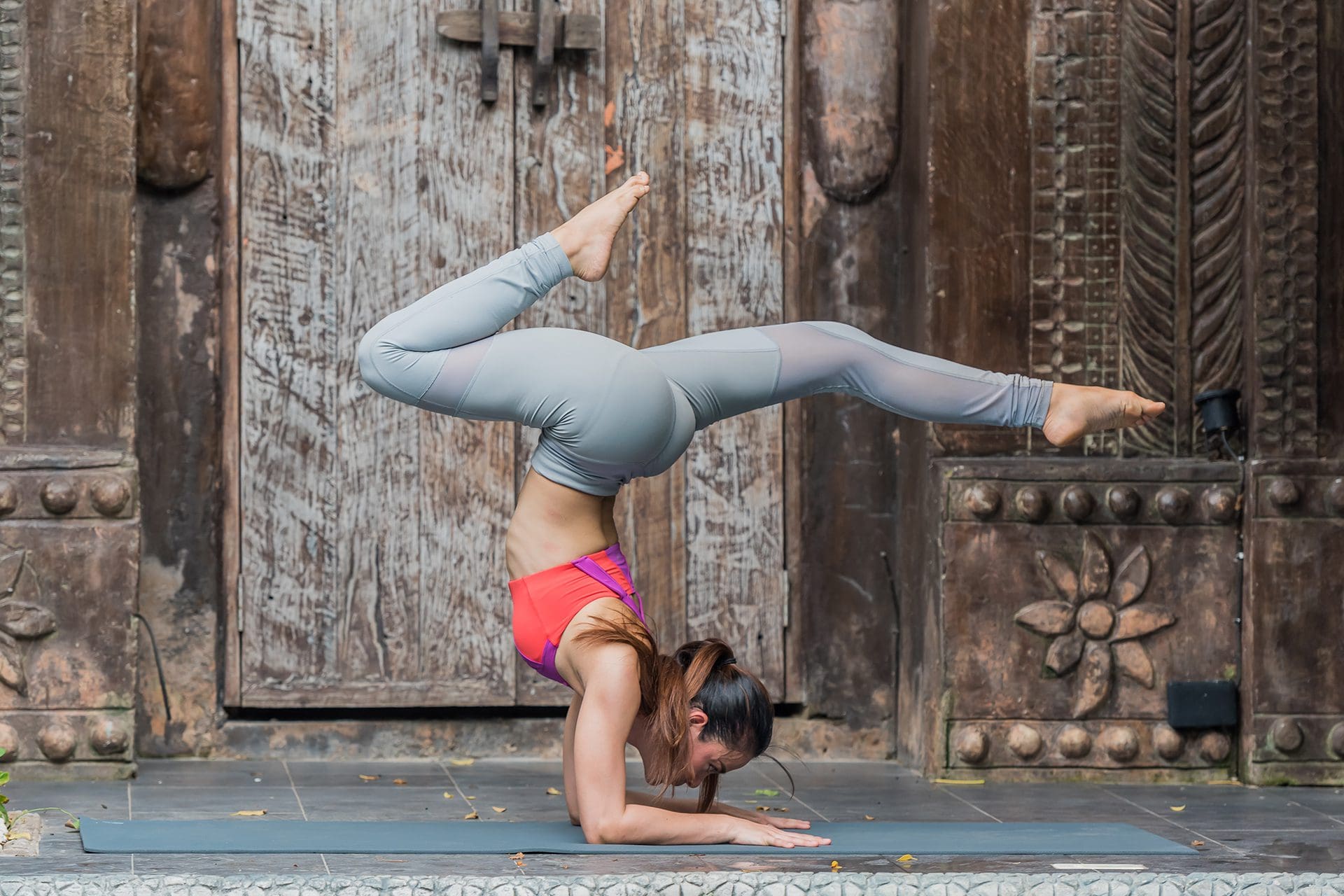The Eight Limbs of Ashtanga Yoga Explained
What is Ashtanga Yoga? What are the Eight Limbs of Yoga? Ashtanga Yoga, a comprehensive system of spiritual and physical practices, is a path or way of life. Following the Ashtanga Yoga path encourages harmony and balance with oneself and society, while slowly progressing to a point of self-realization and liberation. Founded by Sage Patanjali thousands of years ago, Ashtanga Yoga is not only the practice of asanas, but it is a philosophy that provides a roadmap for leading a purposeful and meaningful life, guiding practitioners towards liberation from suffering and realization of their true nature, even in today’s modern world. As Deepak Sharma, founder of Sampoorna Yoga says, “Ashtanga Yoga is not a particular style of asana practice. In fact, you don’t even have to practice asanas to be an Ashtanga Yogi. Ashtanga Yoga is a lifestyle.”
Ashtanga Yoga is commonly confused with Ashtanga Vinyasa, a style of practicing asanas which consists of a series of postures popularized by Pattabhi Jois in 1948. To understand more about Ashtanga Vinyasa and how it is different from Ashtanga Yoga, read Guiding the Flow: Exploring Ashtanga Vinyasa Yoga Teacher Training.

Now coming back to the Eight Limbs of Ashtanga Yoga, Sage Patanjali structured this philosophy system when he put together the Patanjali Yoga Sutras, a beautiful text of 196 lines that acts as a formula of yoga, a formula that allows one to explore the inner world within themselves. Outlined below is a brief summarization of the Eight Limbs of Ashtanga Yoga and their significance in today’s world.
- Yamas or Ethical Social Norms: The first limb of Ashtanga Yoga, Yama, encompasses ethical guidelines and moral precepts that serve as the foundation for harmonious living as a society. The Yamas consists of five principles:
- Ahimsa (Non-violence): Cultivating compassion and non-violence towards oneself and others.
- Satya (Truthfulness): Speaking truthfully and living with integrity in thought, speech, and action.
- Asteya (Non-stealing): Respecting the property and possessions of others and refraining from theft, and refraining from being greedy.
- Brahmacharya (Moderation): Practicing moderation in all aspects of life, including food, sleep, and sensory indulgence.
- Aparigraha (Non-attachment): Letting go of greed, possessiveness, and attachment to material possessions.
- Niyamas or Observances: Niyama, the second limb of Ashtanga Yoga, comprises personal observances and disciplines aimed at self-purification and spiritual growth. Niyama consists of five practices:
- Saucha (Purity): Cultivating cleanliness and purity of body, mind, and environment.
- Santosha (Contentment): Cultivating contentment and gratitude for what one has, rather than constantly seeking external validation or fulfillment.
- Tapas (Discipline): Cultivating self-discipline, perseverance, and austerity to overcome obstacles and achieve spiritual goals.
- Svadhyaya (Self-study): Engaging in self-reflection, introspection, and study of sacred texts to deepen self-awareness and understanding.
- Ishvara Pranidhana (Surrender to the Divine): Surrendering one’s ego and will to the divine or higher power, and acknowledging the interconnectedness of all beings.
- Asanas or Physical Postures: Asana, the third limb of Ashtanga Yoga, refers to the practice of physical postures or poses. While modern yoga often emphasizes the physical aspect of asana practice, its true purpose within the context of Ashtanga Yoga is to prepare the body and mind for meditation. Through the practice of asanas, practitioners develop strength, flexibility, and balance, while also cultivating mindfulness, focus, and awareness.
- Pranayama or Breath Control: Pranayama, the fourth limb of Ashtanga Yoga, involves the regulation and control of the breath. Prana, or life force energy, is believed to flow through the breath. By practicing pranayama techniques, practitioners can harness this vital energy for physical, mental, and spiritual well-being. Pranayama techniques include deep breathing, alternate nostril breathing, and breath retention, each offering unique benefits for calming the mind, balancing the nervous system, and enhancing vitality.
- Pratyahara or Withdrawal of the Senses: The fifth limb of Ashtanga Yoga is Pratyahara and it refers to the withdrawal of the senses from external stimuli and turning inward. In our modern world filled with constant distractions and sensory overload, Pratyahara provides a means of reclaiming our attention and cultivating inner stillness. By withdrawing the senses, practitioners can move towards greater introspection, concentration, and mindfulness, paving the way for deeper states of meditation and self-awareness.
- Dharana or Concentration: The sixth limb of Ashtanga Yoga, Dharana, is the first stage of meditation. It involves the practice of concentration or focused attention. By directing the mind towards a single point of focus, such as a symbol, mantra, image, or breath, practitioners develop mental clarity, stability, and inner strength. Dharana lays the foundation for cultivating deeper states of awareness and insight.
- Dhyana or Meditation: Dhyana, the seventh limb of Ashtanga Yoga, is the practice of meditation or sustained contemplation. Through meditation, practitioners cultivate a state of uninterrupted awareness and inner stillness, transcending the fluctuations of the mind. Dhyana allows individuals to experience a profound sense of peace, clarity, and interconnectedness with all beings, leading to the last limb, Samadhi or self-realization.
- Samadhi or Liberation: Samadhi, the eighth and final limb of Ashtanga Yoga, represents the ultimate goal of yoga: union with the divine or realization of one’s true nature. In the state of Samadhi, the individual transcends the limitations of the ego and merges with the universal consciousness, experiencing a profound sense of oneness, bliss, and liberation. While Samadhi is often described as a state of profound ecstasy and transcendence, it is also characterized by a deep sense of peace, equanimity, and unconditional love.
By adapting the Eight Limbs of Yoga, individuals can truly say they are living a yogic lifestyle with greater awareness, compassion, and harmony. As we progress and embrace the teachings of yoga, we begin to recognize that the path of liberation lies within each and every one of us. In this video, Deepak explains what yoga is, the Yoga Sutras and the Eight Limbs of Ashtanga Yoga in a beautiful, easy to understand and adaptable manner:
YOGA ALLIANCE REGISTERED YOGA TEACHER TRAINING COURSES

Sampoorna Yoga Teacher Training School has been a registered international yoga school with Yoga Alliance, holding RYS-200, RYS-300, RYS-500, and YACEP designations since 2009. Its online and in-person Yoga Teacher Training Courses and Certifications are recognized and accepted worldwide, enabling all graduates to teach globally. Upon course completion, participants receive a 200-Hour, 300-Hour, or 50-Hour Yoga Teacher Training Certification, allowing registration as RYTs (Registered Yoga Teachers) with Yoga Alliance. Our Yoga Teacher Training Certificate Courses empower you to teach legally in any country, whether you choose to register with Yoga Alliance registration or not.

